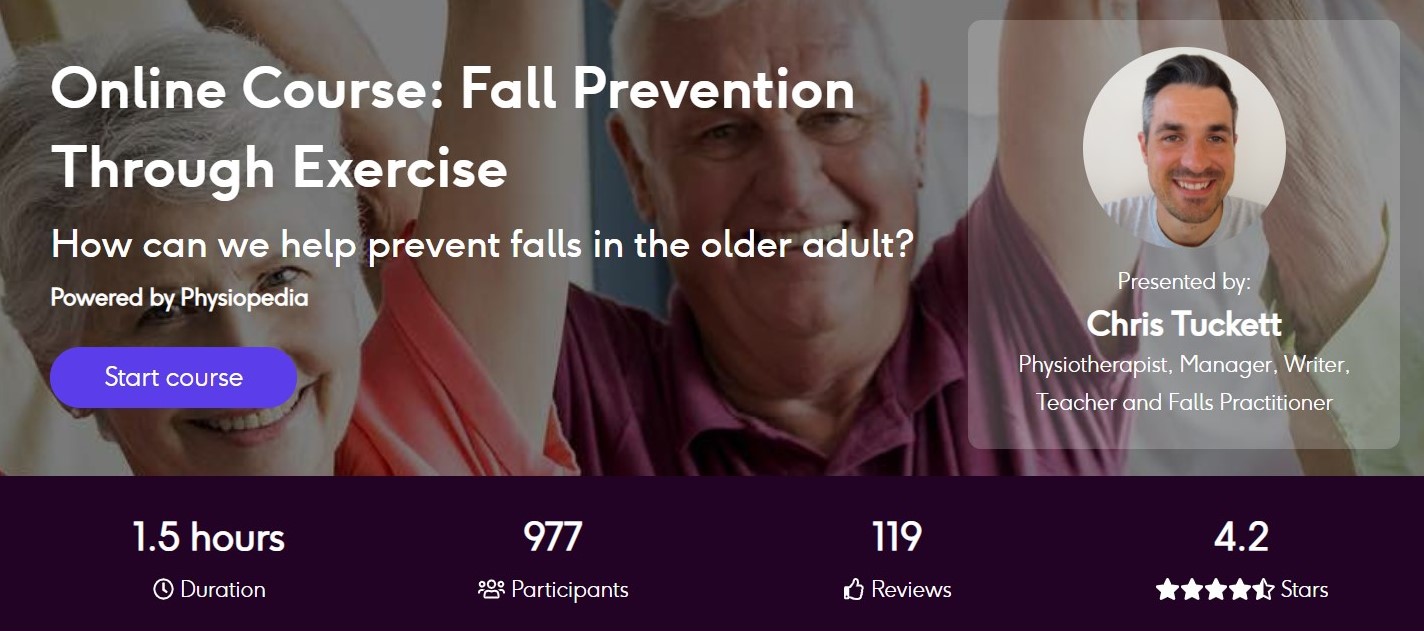It’s a long held assumption that elderly people won’t respond to virtual reality training but this isn’t the case.
Virtual reality is increasingly being used as a tool to improve physical fitness and health across all ages but it is often thought that this wouldn’t be the case for older people. This is despite evidence emerging suggesting that this isn’t the case.
Improve Your Choice of Falls Exercises
Part of the problem has been a lack of consistency in the type and form of VR used and the lack of applying important training principles for preventing falls and improving effectiveness in an elderly population.
A new systematic review published in Frontiers set out to clarify if VR training is effective at improving balance but also tell us the frequency and duration or training as well as which form of VR is best to use.
Methods
The protocol for this systematic review was published in PROSPERO and adhered to PRISMA guidance. Two researchers independently performed the review using four databases with a search strategy which is available in full.
To be eligible for inclusion articles had to be randomised controlled trials and meet the following criteria:
- use participants which were 60 years or older and not have any cognitive impairment or neurological disorder
- participants had to stand and walk without assistance and not take part in exercise regularly
- use virtual reality training as the intervention which must include a fitness programme
- compare virtual reality with traditional physical training e.g balance and strength
- use functional mobility tests as the outcome measure
Articles were excluded if they weren’t published in English or data was unable to be obtained. The quality of the included articles was assessed using the Cochrane Risk of Bias 2.0 tool with data analysis performed using Revman.
Results
In total 15 articles were included within the systematic review which includes a total 704 participants with an equal split of 352 in the virtual reality and traditional exercise groups. Six studies were performed in an institutional care setting with the others taking place in the community. The intervention duration ranged from 3 – 15 weeks with a frequency of one and five times per week. The duration varied between 30 to 50 minutes.
Three studies focussed on immersive virtual reality systems which were Oculus Rif and BTS NIRVANA VR with the other studies using non-immersive VR including Nintendo Wii fit and Xbox Kinect. The VR games were categorised into three groups using different principles of activity used in older adults. Eight studies implemented the principle of repetitive, varied practice of meaningful tasks. Four studies used the principle of the task difficulty is progressively increased according to the user’s ability and the final four studies combined the two principles of repetitive, varied practice of meaningful tasks and sensory feedback that is related to the task is necessary.
15 studies used timed up and go as an outcome measure with the results of the meta-analysis showing that compared to traditional training VR training induced significant improvements in TUG (MD =−0.31 s, 95% CI =−0.57 to−0.05,p= 0.02). When subgroup analysis was performed immersive VR was most effective (MD =−0.52 s, 95% CI =−0.95 to−0.05,p= 0.02) when compared to non-immersive VR. Furthermore training sessions which lasted more than 120 minutes at least 3 times per week for 8 weeks or more were most effective. Sessions which combined the two principles of repetitive, varied practice of meaningful tasks and sensory feedback that is related to the task is necessary were also most effective.
Virtual reality training was also shown to be more effective for improving one-leg stand than traditional training (MD = 7.28 s, 95% CI = 4.36 to 10.20,p= 0.00) however results from the funnel plot indicate publication bias. There are no significant differences between immersive and non-immersive forms of VR and there doesn’t appear to be much differences between shorter or longer duration of training sessions. For functional reach and gait speed there appears to be no difference between VR and traditional training.
Overall the results from this systematic review suggest that virtual reality training is a useful strategy at improving some forms of balance in the elderly. To maximise effectiveness interventions lasting for longer than 8 weeks with over 800 minutes performed with a high rate of frequency should be used. The findings in from this systematic review should put to bed the assumption that elderly people do not respond well to virtual reality.
